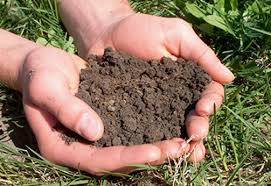Know thy soil – Maximize your gardening success
- by The Lord Humungus
- 9 years ago
- 0 comments

**This article was contributed by SPQR Cincinattus**
Fall is a great time to start planning for next year’s crop. Whether you operate a large farm or tend a simple garden, understanding what nutrients are in your soil will greatly affect the success of your future crop. The easiest way to know what is currently in your soil is to take a soil sample.
The majority of a plant is composed of carbon which comes from the air in the form of carbon dioxide, however nearly everything else comes from the soil. Critical nutrients such as phosphorus, potassium, calcium, magnesium, and zinc must be available to the plants in the soil as they are growing to support a healthy and productive plant. If any one of these components are missing or are at an insufficient level the plant will grow poorly, become more susceptible to insect and disease damage, and ultimately yield less of a crop. In cases of severely insufficient nutrients it can lead to a total crop failure.
Simply adding fertilizers to the soil is often not sufficient. The acidity of soil, also referred to as “pH”, directly affects how readily nutrients are available for the plant to take up through their roots. Each type of crop has its ideal range of pH, so it is also important to know what those needs are. A soil sample can determine what the current pH of the soil is and with that information the necessary soil amendments can be added to alter the pH to the desired range.
It is important to take an accurate soil sample so you will know exactly what soil nutrients are available to your future crop. With a clean shovel, or similar tool, take a thin vertical section of soil about six to eight inches deep from a minimum of ten randomly chosen locations within a garden plot or within an area less than fifteen acres per sample. Remove any stones or surface litter from the collected soil. Combine all of the soil collected and mix it thoroughly together and fill a soil sample bag to the instructed fill line. These sample bags are available in most county’s agricultural extension offices.
Once a soil sample is submitted the results will usually be available in about a week and a report specific to your crop will contain all key nutrient information and recommendations.
The soil report not only tells you what nutrients are available currently and what specific nutrients you may need, it also gives advice on what kinds of fertilizers would be best to supply your crop with nutrients. Using this information for your crop can mean the difference between abundance and headache.

